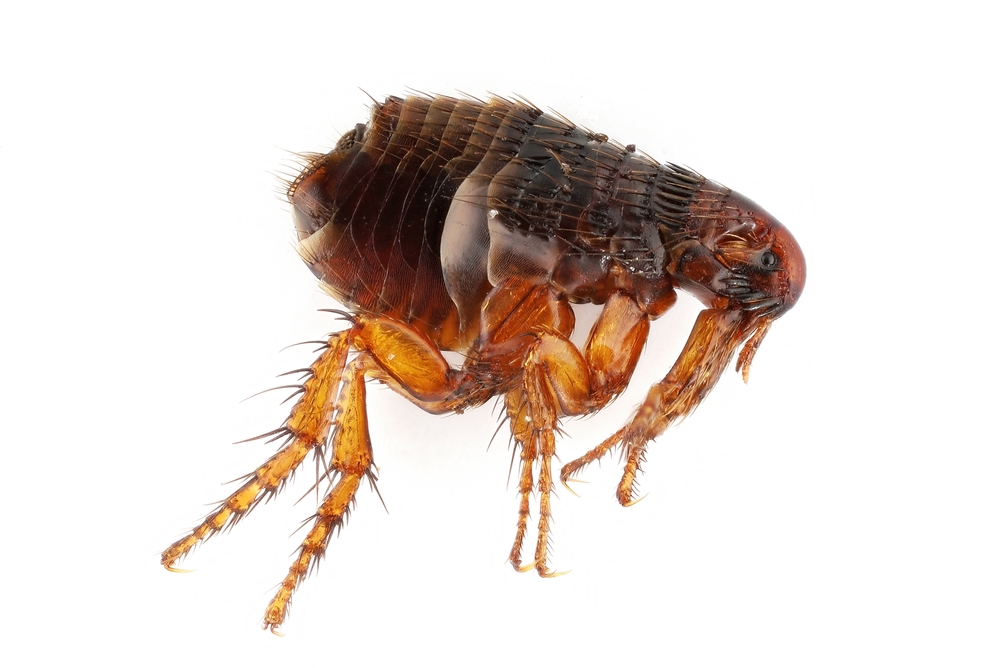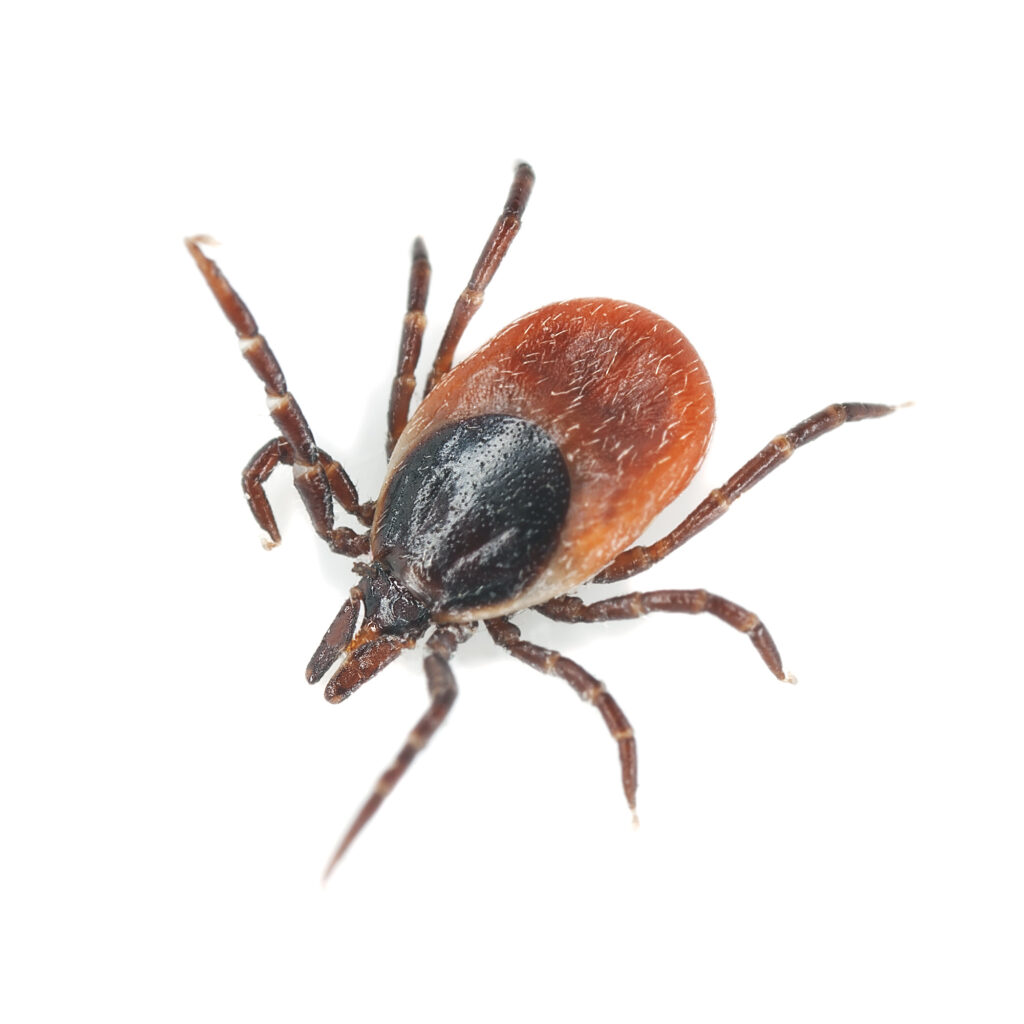Get Ready for Flea and Tick Season!
It’s almost that time of year again! Soon, the sun will be shining bright, the flowers will be blooming, and we’ll be enjoying hikes and outdoor adventures without the rain. But warmer weather also means fleas and ticks are on the prowl, and it’s time to prepare!
As the temperatures rise, flea and tick products at your local pet store may start flying off the shelves as pet owners scramble to protect their furry friends from these tiny but troublesome pests. Just thinking about them is enough to make anyone’s skin crawl! But with a little preparation, we can keep fleas and ticks from putting a damper on our summer fun.
Affiliate Disclaimer: This post may contain affiliate links and we may earn a small commission when you click on the links at no additional cost to you so we can continue to provide you with helpful tips and tricks. As an Amazon Affiliate, we earn from qualifying purchases. Thank you for supporting our small business.
Top Product Recommendations for Flea and Tick Prevention
To help protect your pets, here are some highly recommended products available on Amazon. These options can keep fleas and ticks at bay, whether you’re dealing with an infestation or simply staying ahead of the season.
-
Seresto Flea and Tick Collar for Cats – A trusted, long-lasting flea and tick prevention collar that lasts up to 8 months. Odorless and non-greasy, it’s ideal for cat owners who want an easy, set-it-and-forget-it solution. View Product
-
Seresto Flea and Tick Collar for Dogs – This collar offers the same extended protection as the cat version but is specially formulated for dogs. Great for both large and small breeds and effective for up to 8 months. View Product
-
K9 Advantix II Flea, Tick, and Mosquito Prevention for Dogs – A powerful topical solution that not only targets fleas and ticks but also repels mosquitoes. Perfect for active dogs who spend a lot of time outdoors. View Product
-
Frontline Plus for Cats – A well-known topical treatment that kills fleas, ticks, and lice on cats. It’s waterproof, so it’s a solid choice if your pet loves to explore outdoors. View Product
-
Capstar Fast-Acting Oral Flea Treatment for Dogs and Cats – A fast-acting oral treatment that kills fleas on your pet within 30 minutes. Ideal for quick relief from an infestation and safe for both cats and dogs. View Product
What Are Fleas and Ticks?
Fleas and ticks are two types of blood-sucking parasites that love hiding in grass, yards, carpets, furniture, and—unfortunately—on our pets! Fleas are tiny and quick, while ticks are generally larger and slower, making them somewhat easier to spot.
Fleas multiply rapidly, and for every flea you see on your pet, there may be thousands more hiding nearby. Flea “dirt,” or black specks left behind by fleas, is a common sign of infestation and turns red in water due to its blood content. Ticks, on the other hand, have a more obvious, oval shape and can vary in size and color depending on their life stage. In some states like California, common tick species include the western black-legged tick, the Pacific coast tick, the American dog tick, and the brown dog tick.
Why Fleas and Ticks Are Dangerous
Fleas and ticks are far from harmless. They can lead to uncomfortable and even severe health problems for our pets and ourselves.
-
Fleas: Fleas cause itching and discomfort, and pets with flea allergies may experience skin irritation or hair loss. In severe cases, particularly in young or small pets, a flea infestation can lead to anemia. Fleas also carry tapeworms, which can infect pets and cause digestive issues.
-
Ticks: Ticks are notorious for transmitting Lyme disease, a serious illness affecting both pets and humans. While rare in some areas, Lyme disease cases have been documented in various regions, including California. Ticks can also cause localized skin irritation and allergic reactions.
How to Spot Fleas and Ticks
Fleas: Fleas are often tricky to spot due to their tiny size and quick movements, but there are signs that can help you identify an infestation. One telltale sign is the presence of small, dark flecks on your pet’s skin, commonly known as “flea dirt.” Flea dirt is essentially flea excrement, made up of digested blood, and it turns red when it comes into contact with water—a simple test you can do by wiping your pet with a damp cloth or paper towel. Flea dirt is typically found on your pet’s belly, around the tail, or near the neck, areas where fleas tend to congregate.

If the flea population is more advanced, you may even see live fleas jumping or crawling on your pet. Fleas are very small, usually only about 1-3 millimeters, and they have flat, narrow bodies that allow them to move quickly through fur, making them harder to catch with the naked eye. Fleas also have strong hind legs that enable them to jump up to 150 times their body length, which is why you might spot them hopping around on your pet or even on your furniture and carpeting.
Ticks: Ticks are generally easier to spot than fleas due to their larger size, but they still require careful inspection because they can hide well within your pet’s fur. To check for ticks, it’s best to run your hands slowly over your pet’s entire body, feeling for any unusual small, hard bumps on the skin. Ticks commonly attach to areas where the skin is thinner and blood flow is easier to access, so pay extra attention to spots like behind the ears, under the collar, around the neck, on the belly, and even between the toes.

When you feel a bump, part the fur gently to take a closer look. Ticks have a distinct oval or teardrop-shaped body that’s typically brown or grayish. Unlike fleas, ticks don’t jump or move around quickly; instead, they latch onto the skin with their mouthparts and begin to feed. A tick will stay in one place, slowly growing in size as it fills with blood, eventually becoming engorged if left undetected for too long. Engorged ticks can become quite noticeable, ballooning up to several times their original size and turning a lighter gray or pale color.
Ticks can vary in size depending on their species and life stage, with some being as small as a sesame seed and others as large as a small pea. Regular tick checks, especially after outdoor activities or hikes, are essential to prevent ticks from embedding deeply and transmitting diseases. Always remember to wear gloves when handling ticks to avoid direct contact with potential pathogens, and consult your vet if you’re unsure about safely removing a tick from your pet.
How to Get Rid of Fleas and Ticks
Flea Infestations: Treating fleas requires a thorough approach. Start by treating your pet directly, but don’t forget your home and yard. Wash your pet’s bedding, vacuum carpets and furniture, and consider a flea spray or powder for additional protection. Sometimes, multiple treatments are needed to fully eradicate fleas since they reproduce quickly.
Tick Removal: Ticks are generally easier to remove. Use a pair of tweezers or a tool like the TickCheck Removal Kit to grip the tick close to your pet’s skin and pull it out gently but firmly. Be sure the entire tick is removed, then place it in alcohol to kill it and disinfect the bite are
Flea and Tick Prevention Tips
Prevention is the best way to keep fleas and ticks at bay. Here are a few tips:
-
Medications: There are various flea and tick prevention medications available, each with its benefits. I personally use Seresto’s Flea and Tick Collar for my cat, and they also offer collars for dogs. Always consult your vet before starting a new preventative to ensure it’s safe and effective for your pet.
-
Home and Yard Maintenance: Regularly vacuum carpets, wash pet bedding, and keep your yard tidy. Mow the lawn, remove piles of leaves, and clear tall grass where fleas and ticks can hide.
-
Consistency: No matter which products or methods you use, consistency is key. Follow the product instructions carefully and apply preventatives as recommended to keep fleas and ticks from returning.
With a little vigilance and regular preventive measures, you can enjoy a flea-and-tick-free season with your pet by your side.

